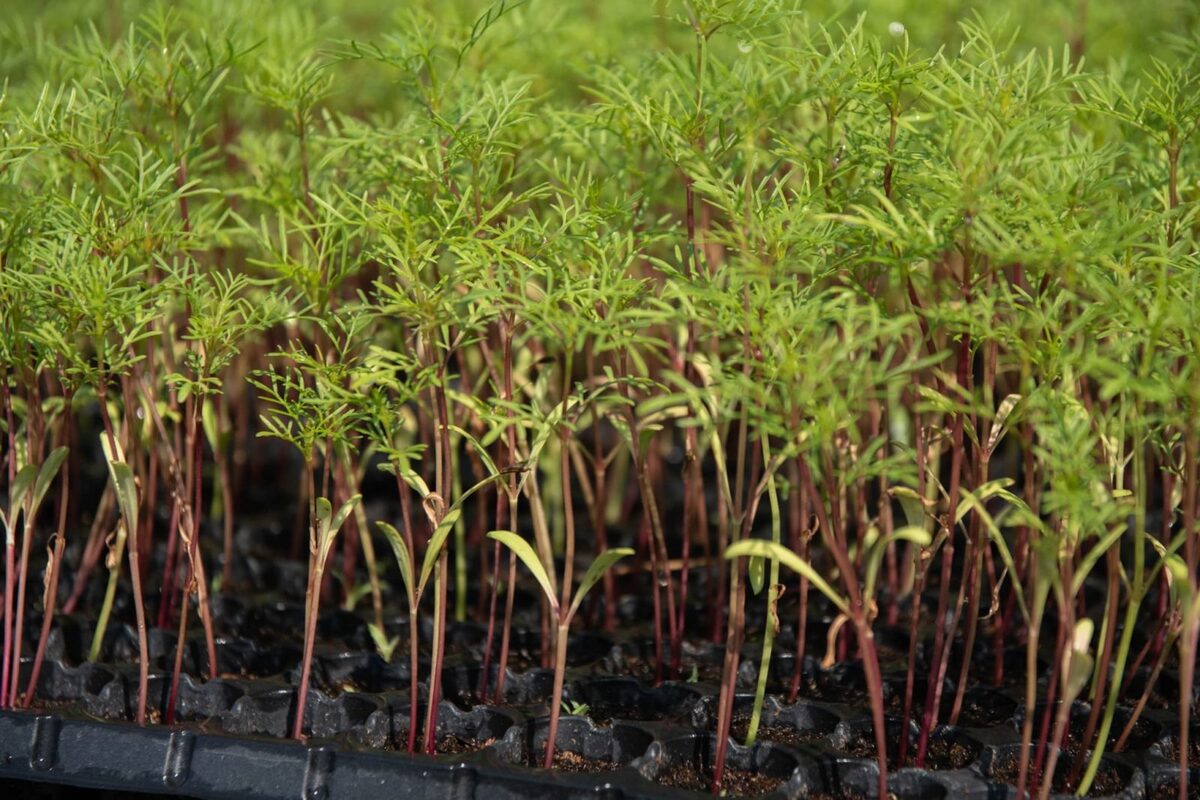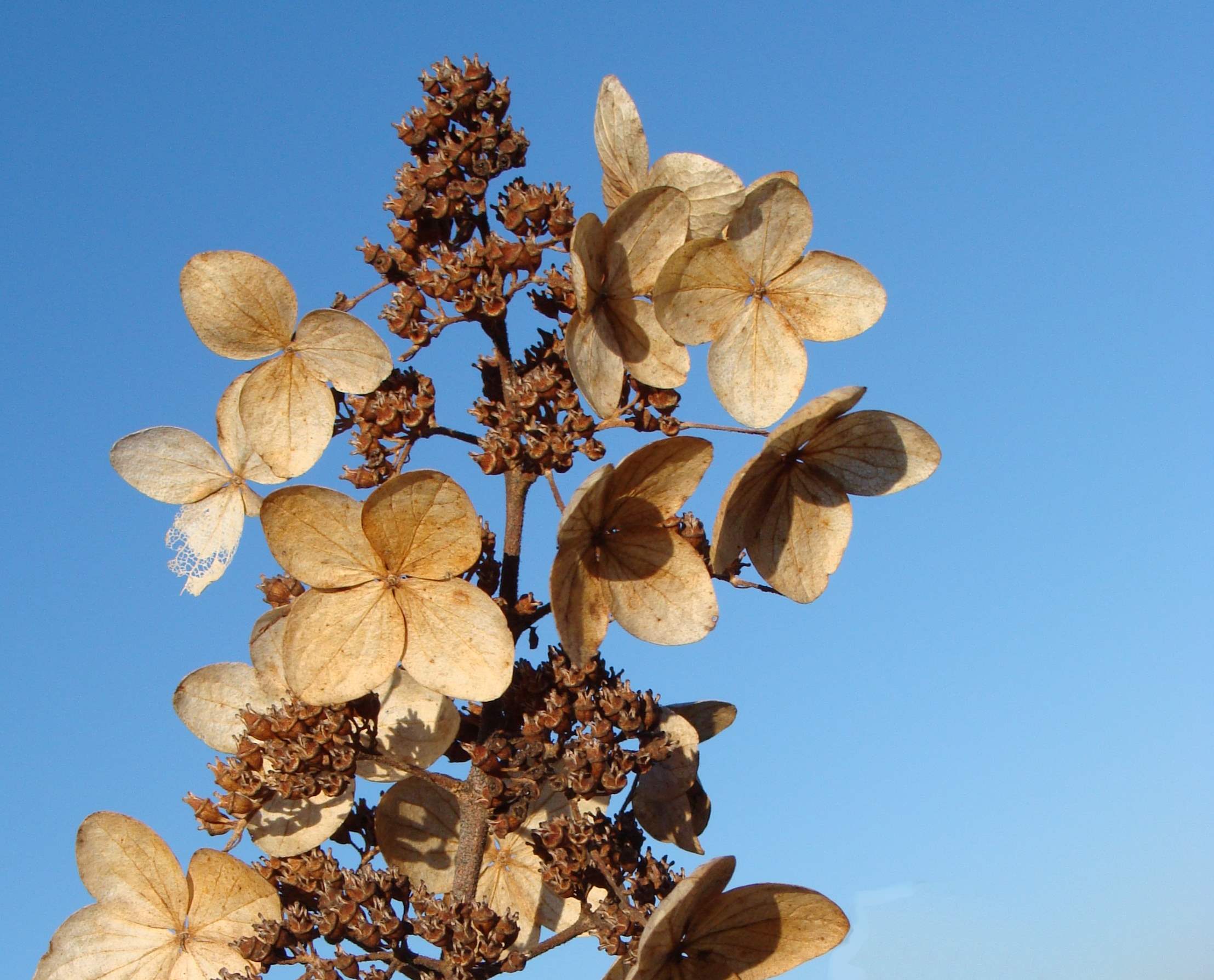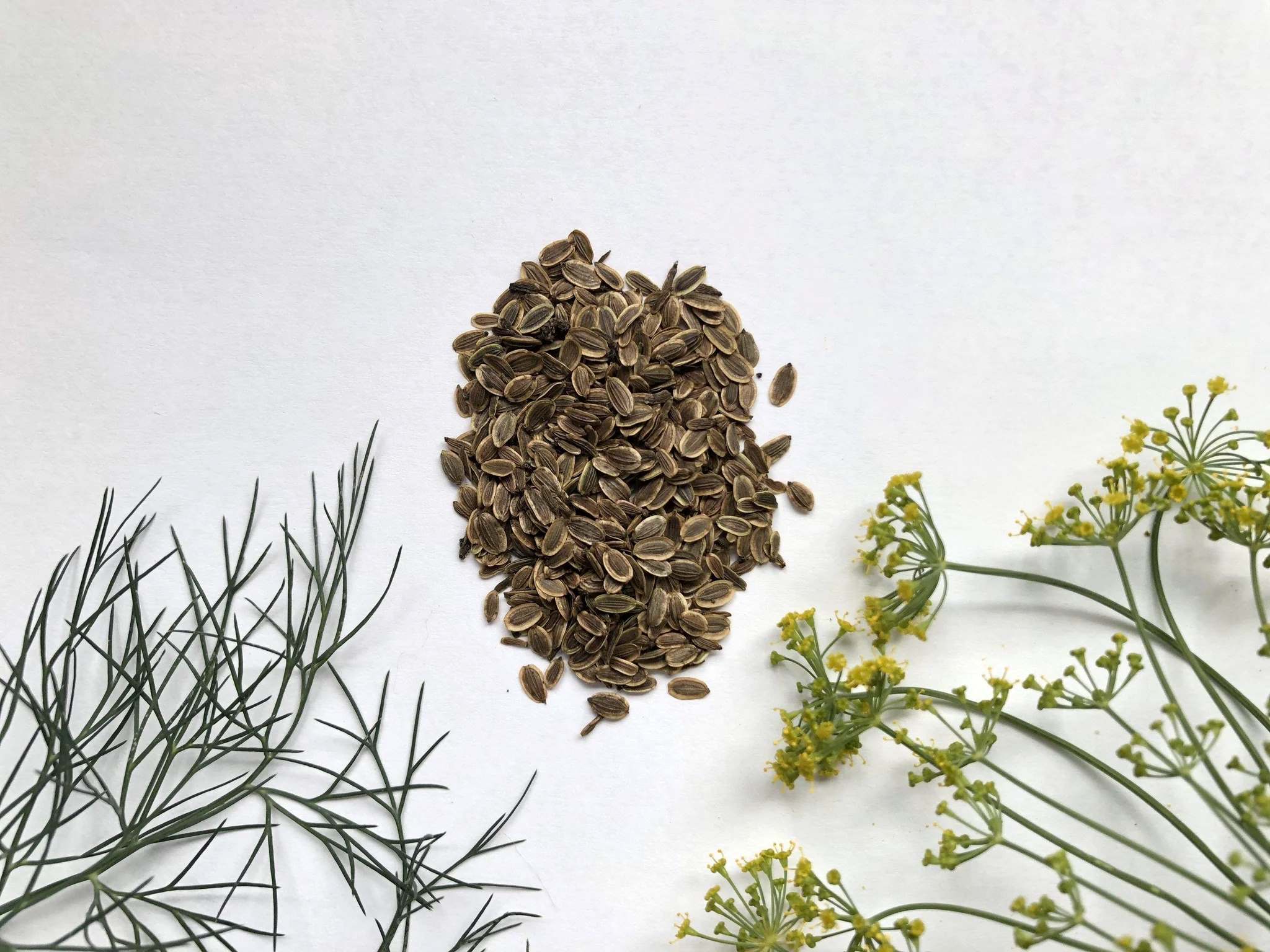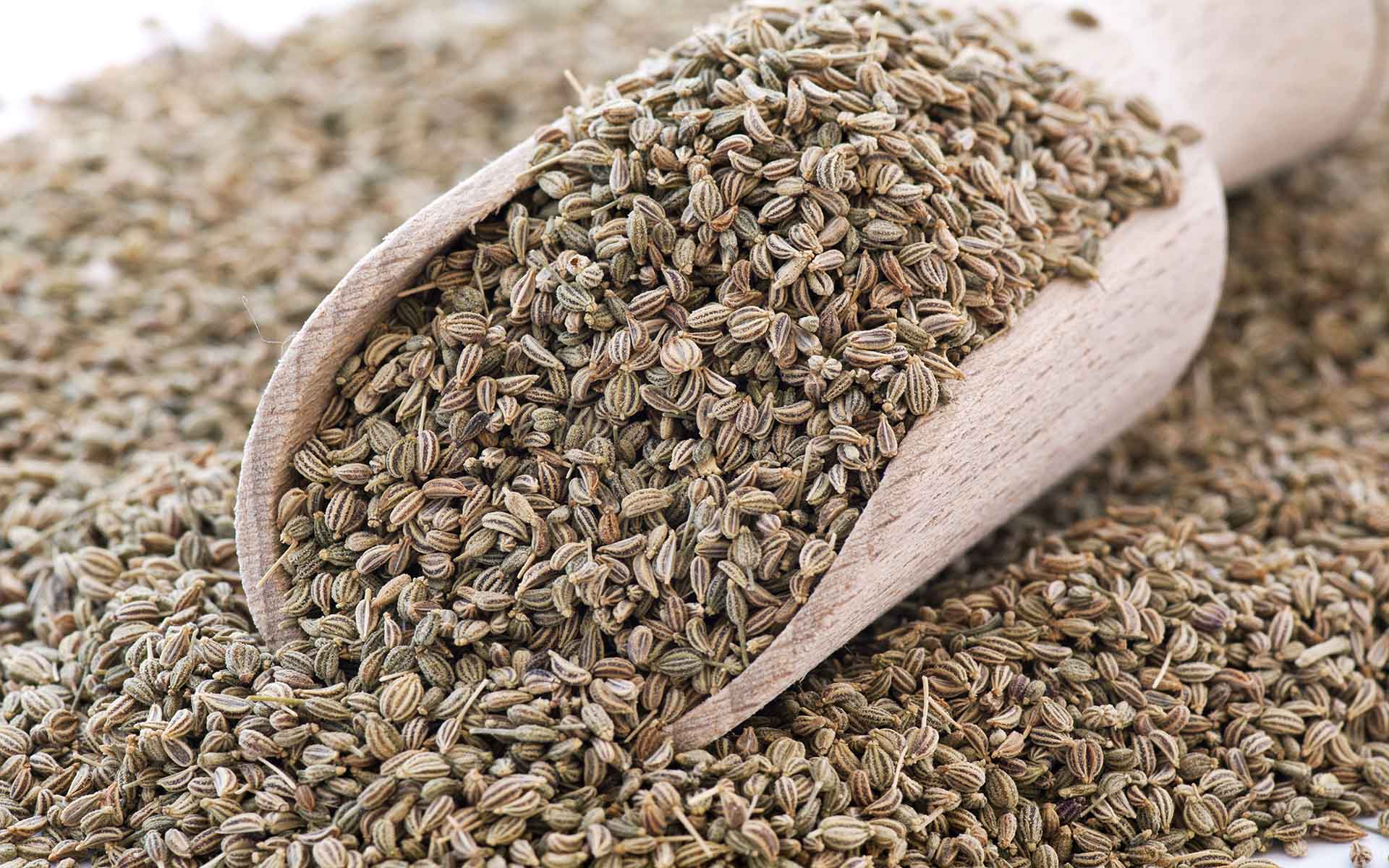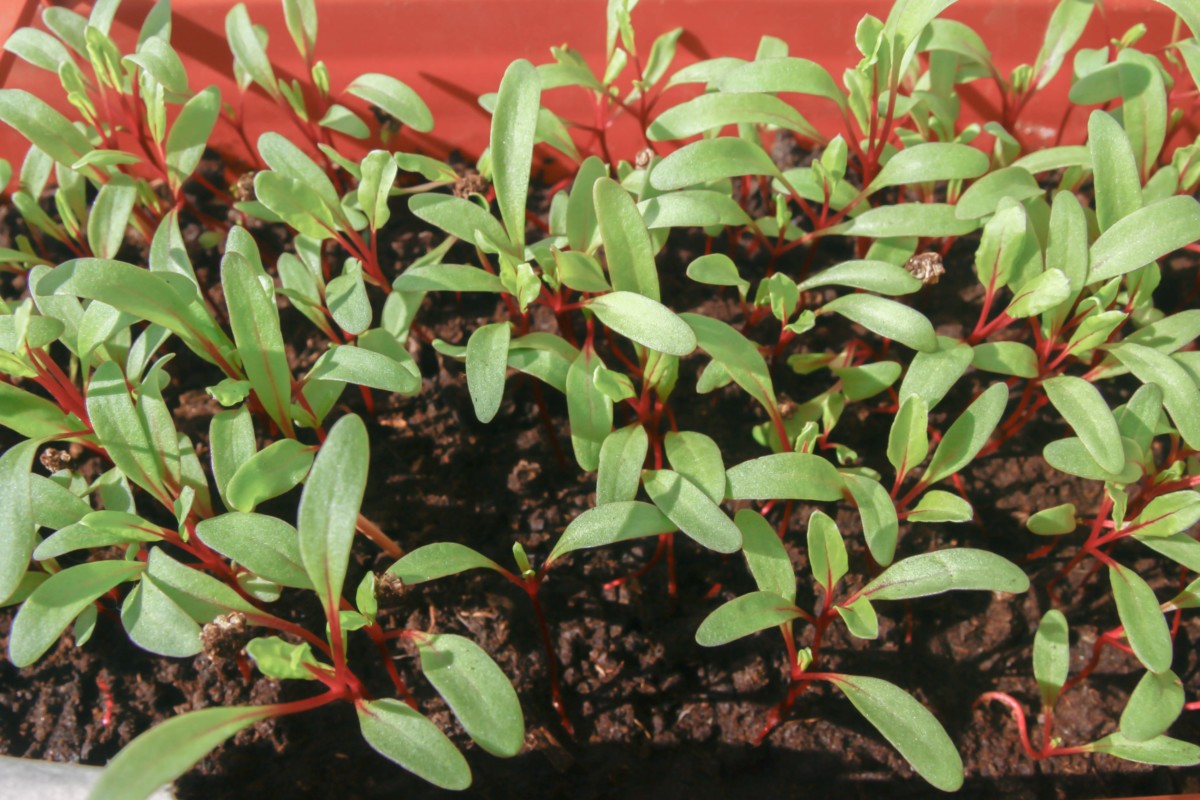Home>Types of Gardening>Ornamental Gardening>What Do Walnut Trees Look Like
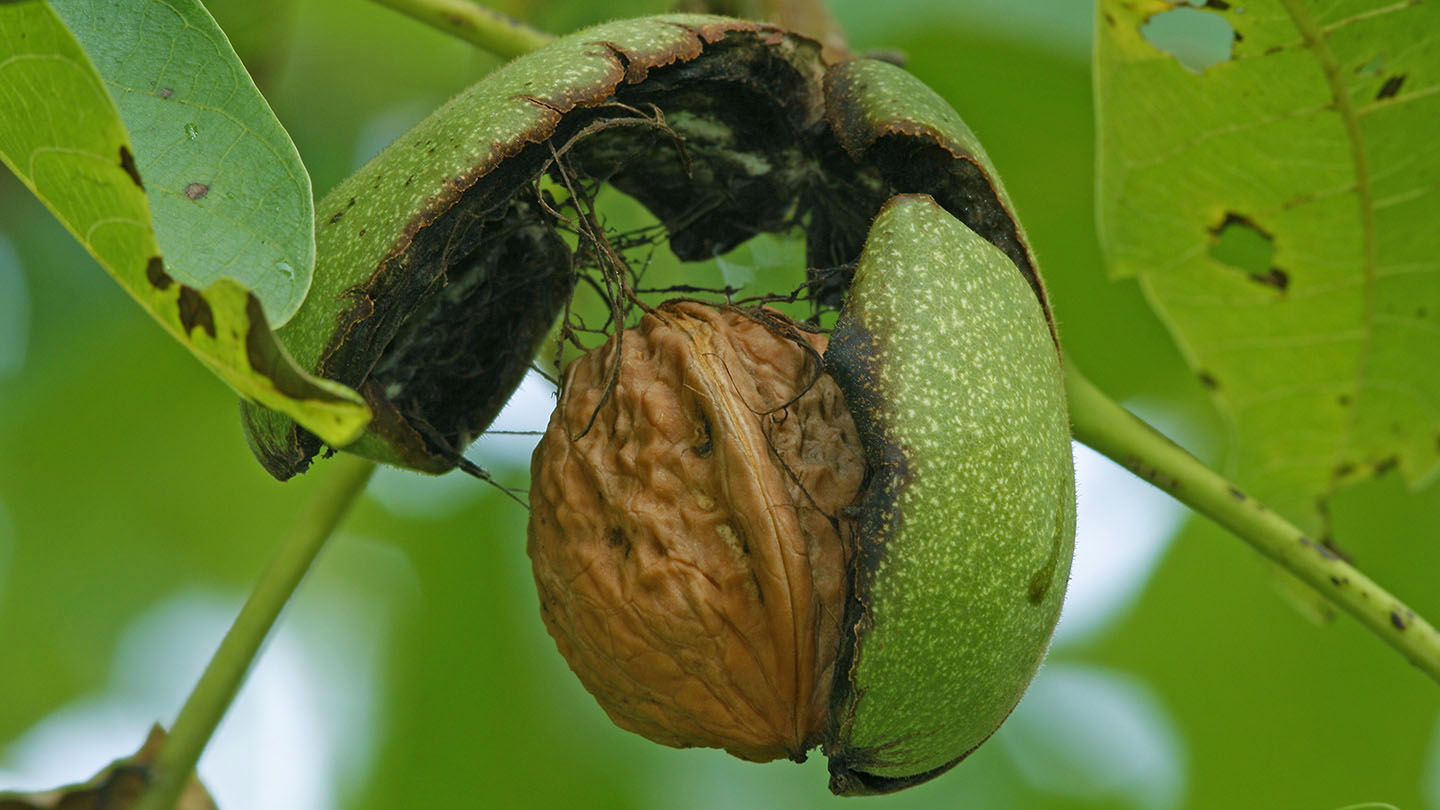

Ornamental Gardening
What Do Walnut Trees Look Like
Modified: January 22, 2024
Learn all about walnut trees and how they can enhance your ornamental gardening. Discover the unique characteristics and appearance of walnut trees.
(Many of the links in this article redirect to a specific reviewed product. Your purchase of these products through affiliate links helps to generate commission for Chicagolandgardening.com, at no extra cost. Learn more)
Table of Contents
Introduction
Welcome to the fascinating world of walnut trees! These majestic trees have captivated gardeners and nature enthusiasts for centuries with their beauty and bountiful harvests. Whether you are an experienced gardener or just starting to explore the world of ornamental gardening, walnut trees are definitely a wonderful addition to any landscape. In this article, we will delve into the characteristics of walnut trees, their unique leaf structure, bark texture, and the importance of their nut production.
Walnut trees, scientifically known as Juglans, are deciduous trees that are native to regions in North America, Europe, and Asia. They belong to the Juglandaceae family, which includes several species of walnut trees. These trees can reach impressive heights and have a long lifespan, making them a valuable addition to any garden or park.
One of the most striking features of walnut trees is their foliage. The leaves of walnut trees are pinnately compound, meaning that each leaf is composed of multiple leaflets arranged along a central stalk. These leaflets give the foliage a lush and full appearance and provide a beautiful backdrop for the tree’s other features.
The bark of walnut trees is another distinctive characteristic that sets them apart from other trees. The bark can vary in texture and color depending on the species and age of the tree. As walnut trees mature, their bark develops deep furrows and ridges, creating an intriguing pattern that adds visual interest to the tree’s trunk.
Walnut trees also exhibit a unique tree shape and size. They have a broad and round canopy that provides ample shade during the hot summer months. The size of walnut trees can vary depending on the species, but on average, they can reach heights of 50 to 100 feet and spread out to a width of 30 to 50 feet.
Aside from their aesthetic appeal, walnut trees are highly valued for their nut production. Walnuts are not only delicious and nutritious, but they are also considered a culinary staple in many cultures. The trees produce large, green husks that enclose the familiar hard-shelled nuts. When the husks dry out and split, the nuts are ready to be harvested and enjoyed.
Furthermore, walnut trees play an essential role in supporting wildlife. Many animals rely on the nuts and leaves of walnut trees as a food source, including squirrels, deer, and various bird species. By planting walnut trees in your garden, you are not only adding beauty to your surroundings, but you are also providing a valuable habitat for local wildlife.
In the following sections of this article, we will explore the cultivation and care of walnut trees, as well as some common varieties you can consider for your own garden or landscape. So, get ready to embark on a journey into the world of walnut trees and discover their unique beauty and benefits!
Characteristics of Walnut Trees
Walnut trees possess a plethora of unique characteristics that make them stand out in the world of ornamental gardening. From their intriguing leaf structure to their distinct bark texture, these trees offer visual interest and charm to any landscape. Let’s take a closer look at the remarkable characteristics of walnut trees.
One of the defining features of walnut trees is their exquisite leaf structure and appearance. The leaves of walnut trees are pinnately compound, meaning that they consist of multiple leaflets arranged in a feather-like pattern along a central stalk. This arrangement creates a visually appealing and lush foliage that adds a touch of elegance to the tree’s overall appearance.
The leaflets of walnut trees are elongated and lance-shaped, with serrated edges. They are typically a vibrant shade of green, providing a stunning contrast against the tree’s dark and textured bark. During the autumn season, the leaves undergo a beautiful transformation, turning into shades of gold, orange, and red, creating a spectacular display of fall colors.
In addition to their distinctive leaf structure, walnut trees are also known for their unique bark texture and color. The bark of young walnut trees is typically smooth and light gray, but as the tree matures, it develops deep furrows and ridges. This textured bark provides an interesting visual element, particularly when combined with the tree’s broad and spreading canopy.
The tree shape and size of walnut trees are also noteworthy characteristics. Walnut trees have a rounded crown with branches that extend horizontally, creating a broad and spacious canopy. This shape offers ample shade, making walnut trees a popular choice for creating shade in gardens, parks, and outdoor seating areas.
When it comes to size, walnut trees can reach impressive heights. On average, they can grow to be 50 to 100 feet tall, with a spread of 30 to 50 feet. However, it is important to note that the size can vary depending on the species and growing conditions. Additionally, walnut trees have a long lifespan, often living for several decades, making them a valuable addition to any landscape.
In the next sections, we will explore the fascinating world of walnut tree cultivation and care, as well as discover some common varieties that you can consider for your own garden. Join us on this journey as we unravel the secrets of growing and nurturing walnut trees!
Leaf Structure and Appearance
The leaf structure and appearance of walnut trees are truly captivating, adding a touch of elegance and beauty to any landscape. Let’s take a closer look at the unique characteristics of walnut tree leaves.
Walnut tree leaves are pinnately compound, meaning they are composed of multiple leaflets arranged along a central stalk called a rachis. Each leaflet is elongated and lance-shaped, with a pointed tip and serrated edges. The number of leaflets can vary depending on the specific species, but commonly, walnut trees have 9 to 23 leaflets per leaf.
These leaflets are arranged in an alternating pattern along the rachis, giving the foliage a feathery and decorative look. The arrangement allows the leaves to capture maximum sunlight while offering an aesthetically pleasing display.
The size of the leaflets also varies depending on the species and environmental conditions. On average, walnut tree leaflets measure around 2 to 5 inches in length. They are typically a vibrant shade of green, creating a lush and vibrant canopy.
One of the fascinating aspects of walnut tree leaves is their ability to change color during the autumn season. As the weather cools down, the leaves undergo a stunning transformation, turning into vibrant hues of gold, orange, and red. This change in color adds a breathtaking spectacle of autumn beauty to any landscape where walnut trees are present.
The leaf surface of walnut tree leaves is smooth and glossy, which allows for efficient transpiration and exchange of gases with the environment. This glossy texture enhances the visual appeal of the leaves, reflecting sunlight and creating a shimmering effect.
The serrated edges of the walnut tree leaflets are not only visually appealing but also serve a functional purpose. They help to reduce water loss through transpiration by creating small pockets of stagnant air that help to minimize evaporation. Additionally, these serrations provide a natural defense mechanism against herbivores, making the leaves less appealing to potential grazers.
Overall, the combination of the pinnately compound leaf structure, vibrant green color, and the mesmerizing transformation during autumn make walnut tree leaves a captivating feature in any garden or landscape.
In the upcoming sections, we will explore more characteristics of walnut trees, such as their bark texture, tree shape, and nut production. Join us on this journey as we uncover the fascinating world of walnut trees!
Bark Texture and Color
The bark of walnut trees is not only visually interesting but also holds clues about the tree’s age and growth. Let’s delve into the unique bark texture and color of walnut trees.
When walnut trees are young, their bark is typically smooth and light gray in color. As the tree matures, the bark undergoes a transformation, developing deep furrows and ridges. These furrows create an intricate pattern that adds a touch of texture and depth to the tree’s trunk.
The texture and pattern of the bark can vary between different species of walnut trees. Some may exhibit more pronounced ridges, while others may have a gentler, almost wavy, texture. The size and arrangement of the furrows can also differ, resulting in a visually distinct appearance for each tree.
As walnut trees continue to age, their bark becomes increasingly rough and gnarled. This rough texture adds character and charm to the tree, giving it a more rugged and weathered appearance.
In terms of color, walnut tree bark can range from light gray to dark brown, depending on the species and age of the tree. Younger trees tend to have a lighter hue, while older trees exhibit a deeper, more mature brown color.
The color of the bark can also be influenced by environmental factors. Walnut trees growing in sunnier locations may develop a darker bark, while those in shaded areas may retain a lighter tone. Additionally, factors such as soil composition and weather conditions can contribute to variations in bark color among walnut trees.
One fascinating aspect of walnut tree bark is its ability to exude a substance referred to as “walnut juice” or “walnut stain.” This dark staining liquid can be observed on freshly cut or damaged areas of the bark. It is caused by the presence of tannins in the tree’s tissues and can be used as a natural dye or wood stain.
Overall, the bark texture and color of walnut trees add visual interest and a unique aesthetic to any landscape. The combination of the intriguing patterns, rough texture, and varying hues make the bark of walnut trees a standout feature in ornamental gardening.
In the next sections, we will explore more characteristics of walnut trees, including their tree shape and size, as well as their nut production. Join us as we continue to unravel the wonders of walnut trees!
Tree Shape and Size
Walnut trees display a distinctive tree shape and size that sets them apart in the world of ornamental gardening. From their broad canopies to their towering heights, these trees make a bold statement in any landscape. Let’s explore the remarkable tree shape and size of walnut trees.
Walnut trees typically have a rounded crown and a spreading canopy, making them ideal for providing shade in gardens, parks, and outdoor spaces. The branches of walnut trees extend horizontally, creating a broad and spacious coverage that shields from the sun’s rays during the hot summer months.
The shape of walnut trees is often described as “umbrella-like” due to their rounded and spreading canopies. This shape not only provides shade but also adds an aesthetic appeal to the overall look of the tree. It creates a sense of grandeur and majesty, making walnut trees a popular choice for landscaping projects.
When it comes to size, walnut trees can reach impressive proportions. On average, they can grow to be 50 to 100 feet tall, with a spread of 30 to 50 feet. However, it is important to note that the size can vary depending on the species and growing conditions.
Walnut trees are recognized for their rapid growth rate, especially during their early years. With the right care and optimal growing conditions, they can put on significant height and width in a relatively short period. This fast growth rate makes walnut trees an excellent choice for those looking to establish a focal point or create a natural screen in their landscape.
Additionally, walnut trees have a long lifespan, often living for several decades. Some varieties can even live for over a century, becoming a lasting testament to their enduring beauty and resilience. Investing in walnut trees means adding a long-lasting legacy to your garden or outdoor space.
It is important to consider the available space in your garden before planting walnut trees. Due to their large size, they require ample room to grow and spread without encroaching on other plants or structures. If space is limited, you may opt for dwarf or semi-dwarf varieties, which are more compact and suitable for smaller gardens or container planting.
In summary, the tree shape and size of walnut trees contribute to their grandeur and impact in ornamental gardening. The rounded canopies and towering heights provide shade and add a sense of majesty to any landscape. Whether you have a spacious garden or a compact urban oasis, there’s a walnut tree variety that can fit perfectly into your space.
In the next sections, we will explore more characteristics of walnut trees, including their nut production, cultivation, and care. Join us as we continue to unravel the wonders of these magnificent trees!
Nut Production
The nut production of walnut trees is one of their most valuable and sought-after characteristics. Walnuts are not only delicious and nutritious, but also play a significant role in culinary traditions across the globe. Let’s explore the fascinating world of walnut tree nut production.
Walnut trees are dioecious, meaning they have separate male and female flowers on different trees. The female flowers, known as catkins, are small and inconspicuous, while the male flowers are longer and more visible. To ensure successful nut production, it is necessary to have both male and female trees in close proximity for pollination to occur.
Once pollination takes place, the female flowers develop into green, spherical husks that enclose the walnut nuts. These husks are smooth and firm, providing protection to the developing nuts and aiding in seed dispersal.
As the walnuts mature, the husks begin to dry out and split, revealing the hard-shelled nuts inside. The nuts are commonly known as “walnut kernels,” and they have a distinctive shape with a wrinkled surface. The shells are tough and require cracking to access the delicious meat inside.
Walnuts are known for their rich, buttery flavor and are a versatile ingredient in both sweet and savory dishes. They can be eaten raw, toasted, or used in various culinary creations, such as salads, desserts, and baked goods. The nutritional value of walnuts is also noteworthy, as they are a good source of healthy fats, protein, fiber, vitamins, and minerals.
Walnut trees typically start producing nuts when they reach about six to ten years of age, although the exact timing can vary depending on the species and growing conditions. The production level varies from year to year, with some years yielding a bumper crop while others may have a lighter harvest.
Harvesting walnuts is typically done in the late summer or early fall when the husks have turned from green to brown and the nuts inside have fully developed. The husks are removed, and the nuts are left to dry before cracking them open to access the kernels.
It’s important to note that walnut trees can produce a substantial amount of nuts, making them ideal for those looking to harvest their own fresh walnuts. However, it’s also worth considering that walnut trees require proper care and maintenance to ensure optimal nut production and tree health.
In the upcoming sections, we will explore the cultivation and care requirements of walnut trees, as well as introduce you to some common and popular walnut tree varieties. Join us as we continue our journey into the world of walnut trees!
Wildlife Importance
Walnut trees play a vital role in supporting wildlife, providing a habitat and a valuable food source for various animals. From squirrels to birds, many creatures rely on the nuts and leaves of walnut trees to survive and thrive. Let’s explore the importance of walnut trees in supporting wildlife.
One of the primary beneficiaries of walnut trees’ nut production is squirrels. These agile and resourceful animals have a knack for finding and harvesting walnuts. They use their keen sense of smell to locate the nuts, and their sharp teeth to crack open the shells and extract the tasty kernels inside. Walnut trees provide a consistent and abundant source of food for squirrels, helping to sustain their populations throughout the year.
Walnut trees also attract a wide variety of bird species. Many birds, including woodpeckers, nuthatches, and jays, are known to visit walnut trees to feast on the nuts. Not only do these nuts provide a nutrient-rich food source, but they also offer an energy boost during migration and harsh winters.
Aside from the nuts, the leaves of walnut trees serve as food for numerous species of caterpillars and insects. These invertebrates, in turn, become a vital part of the food chain, providing nourishment for birds and other insectivorous animals. The presence of walnut trees supports a healthy ecosystem by promoting biodiversity and providing a stable food web.
Walnut trees’ benefits extend beyond food provision. The large and spreading canopies of walnut trees offer shelter and nesting sites for birds. The dense foliage also provides protection from predators, weather extremes, and sunlight, creating a safe haven for wildlife to thrive.
Furthermore, fallen leaves from walnut trees contribute to the nutrient cycle of the soil. As the leaves decompose, they release essential minerals and organic matter, enriching the soil and promoting healthy growth for other plants in the vicinity. This nutrient cycling process benefits not only walnut trees but also the entire ecosystem.
By planting walnut trees in your garden or landscape, you are not only adding beauty and shade but also creating a valuable habitat for wildlife. Your actions can have a positive impact on local ecosystems, supporting biodiversity and creating a haven for various animal species.
In the following sections, we will explore the cultivation and care of walnut trees, as well as introduce you to some common and popular walnut tree varieties. Join us as we continue our journey into the world of walnut trees and discover the joy of growing these remarkable trees!
Cultivation and Care
Cultivating and caring for walnut trees require careful attention to ensure their optimal growth and productivity. Whether you have a small backyard or a spacious garden, here are some essential tips for successfully cultivating and maintaining walnut trees.
1. Choosing the Right Location: Select a location that provides full sun exposure for at least six to eight hours a day. Walnut trees prefer well-drained soil and thrive in areas with moderate rainfall.
2. Soil Preparation: Prepare the soil by removing any weeds or grass and loosening it with a garden fork or tiller. Ensure the soil is well-drained and rich in organic matter.
3. Planting: Dig a hole that is wide and deep enough to accommodate the tree’s root system. Place the tree in the hole, making sure the bud union (the swollen area at the base of the trunk) is slightly above the soil level. Fill the hole with soil and gently firm it around the base of the tree.
4. Watering: Provide regular and consistent watering, especially during the first few years of the tree’s growth. Keep the soil evenly moist but not waterlogged. Proper hydration is essential for the tree to establish a strong root system.
5. Mulching: Mulch around the base of the tree with a layer of organic mulch, such as wood chips or straw. This helps to retain moisture, suppress weed growth, and regulate soil temperature.
6. Fertilizing: Apply a balanced fertilizer specifically formulated for fruit trees in early spring, following the manufacturer’s instructions. Additionally, a yearly application of compost or well-rotted manure can provide essential nutrients to support tree growth.
7. Pruning: Prune walnut trees during the dormant season (late winter or early spring) to remove any dead, damaged, or crossing branches. Pruning promotes good airflow, reduces the risk of disease, and enhances fruit production.
8. Pest and Disease Control: Monitor the tree regularly for pests and diseases, such as walnut husk flies, aphids, or walnut blight. If necessary, consult with a local garden center or extension service to identify the problem and determine suitable control methods.
9. Harvesting: Harvest the walnuts when the husks have turned brown and split open. Remove the nuts from the husks and allow them to dry for a few weeks before storing or consuming.
10. Continuous Care: Provide ongoing care and maintenance, including regular watering, fertilizing, and monitoring for pests and diseases. Walnut trees require patience and dedication, but with proper care, they can reward you with an abundant harvest for many years to come.
Remember, each walnut tree is unique, and individual care needs may vary. It’s essential to adapt your cultivation and care techniques based on your specific growing conditions and the variety of walnut tree you are cultivating.
In the subsequent sections, we will introduce you to some common and popular walnut tree varieties, allowing you to choose the right one for your garden and reap the rewards of cultivating these magnificent trees.
Common Walnut Tree Varieties
There are several common walnut tree varieties that are prized for their nut production, growth habits, and adaptability to different climates. Let’s explore some of the popular walnut tree varieties that you can consider for your garden or landscape.
1. English Walnut (Juglans regia): Also known as the Persian walnut, the English walnut is one of the most widely cultivated walnut tree varieties. It produces large, thin-shelled nuts with a sweet and mild flavor. English walnut trees are known for their spreading growth habit and can reach a height of 50 to 70 feet.
2. Black Walnut (Juglans nigra): Native to North America, the black walnut is highly valued for its dark and flavorful nuts. However, it is important to note that the tree produces a chemical called juglone, which can be toxic to some plants. Black walnut trees have a tall and upright growth habit and can grow up to 100 feet tall.
3. Carpathian Walnut (Juglans regia ‘Carpathian’): This variety of English walnut is known for its cold-hardiness and adaptability to a wide range of climates. Carpathian walnut trees produce medium-sized nuts with a rich flavor. They have a compact and rounded growth habit, making them suitable for smaller gardens or urban environments.
4. California Black Walnut (Juglans californica): Native to California, this walnut tree variety is well-suited for dry and arid climates. It produces small to medium-sized nuts with a rich and robust flavor. California black walnut trees have a spreading growth habit and can reach a height of 40 to 60 feet.
5. Heartnut (Juglans ailantifolia var. cordiformis): The heartnut is a unique walnut tree variety known for its heart-shaped nuts. It is a cultivar of the Japanese walnut and is treasured for its mild and sweet-flavored kernels. Heartnut trees have a spreading growth habit and can reach a height of 30 to 50 feet.
When selecting a walnut tree variety, consider factors such as climate suitability, space availability, and personal preferences regarding nut flavor and size. It’s essential to choose a variety that is well-adapted to your specific region to ensure successful growth and nut production.
Before planting a walnut tree, check with local nurseries, extension services, or horticultural experts to determine the most suitable varieties for your area. They can provide valuable insights and recommendations based on the specific conditions of your region.
By selecting the right walnut tree variety, you can enjoy the beauty of the tree itself and the abundant harvest of delicious nuts for years to come.
As we conclude our exploration of walnut trees, we hope that you’ve gained valuable insights into their characteristics, cultivation, and care. Whether you choose to grow a walnut tree for its visual appeal, its wildlife benefits, or its delectable nuts, these majestic trees have a significant place in the world of ornamental gardening.
Conclusion
Walnut trees are not only beautiful additions to any landscape but also offer numerous benefits to gardeners, wildlife, and even culinary enthusiasts. From their elegant leaf structure and unique bark texture to their bountiful nut production, walnut trees provide a wealth of aesthetic and practical value.
Through this article, we have explored the captivating characteristics of walnut trees, including their pinnately compound leaves, textured bark, and distinctive tree shape and size. We have also discovered the importance of walnut trees in supporting wildlife, providing vital habitats and food sources for a variety of animals.
Additionally, we have learned about the cultivation and care of walnut trees, from choosing the right location and soil preparation, to proper watering, pruning, and pest control. These insights will help ensure the successful growth and longevity of walnut trees in our gardens and landscapes.
Furthermore, we have explored some common walnut tree varieties, such as the English walnut, black walnut, Carpathian walnut, California black walnut, and heartnut. Each variety offers its own unique characteristics and benefits, making it possible to find the perfect walnut tree for different climates and preferences.
Whether you are planting a walnut tree to enhance the visual appeal of your garden, provide a habitat for wildlife, or enjoy the delicious and nutritious nuts, these magnificent trees deserve a special place in ornamental gardening.
We hope that this article has provided you with valuable insights and inspiration to embark on your own walnut tree journey. May you enjoy the beauty, benefits, and abundance that walnut trees bring to your garden or landscape.
So, what are you waiting for? Start growing your own walnut tree today and experience the wonders of these remarkable trees firsthand!
